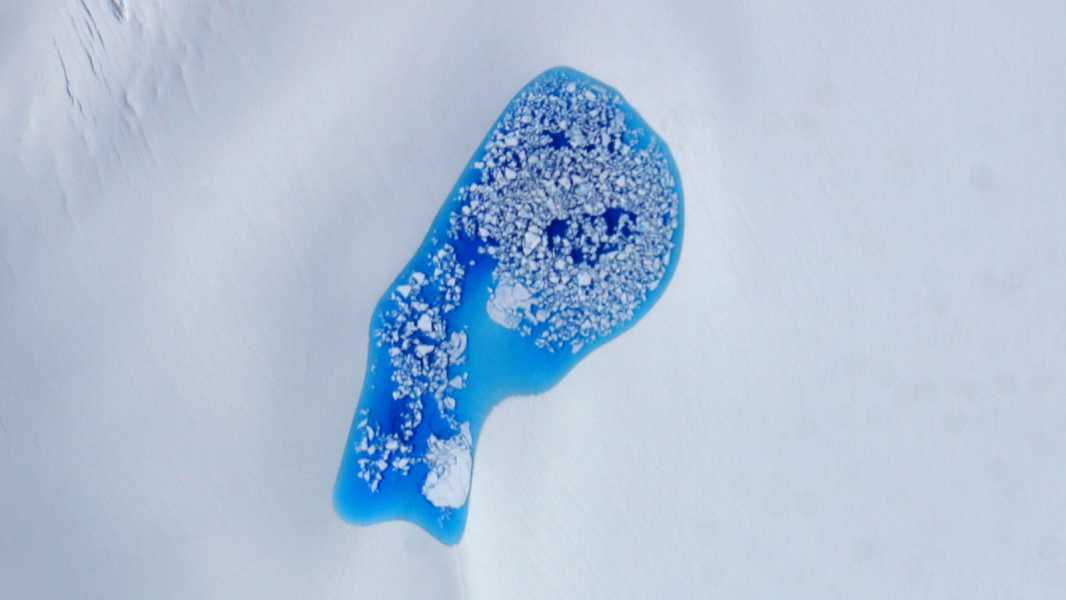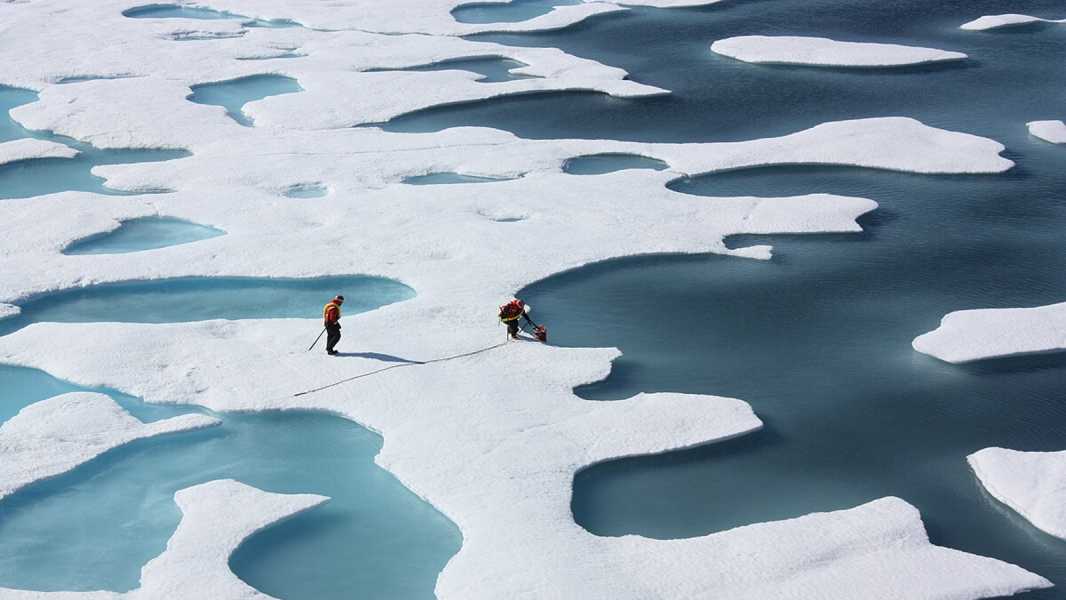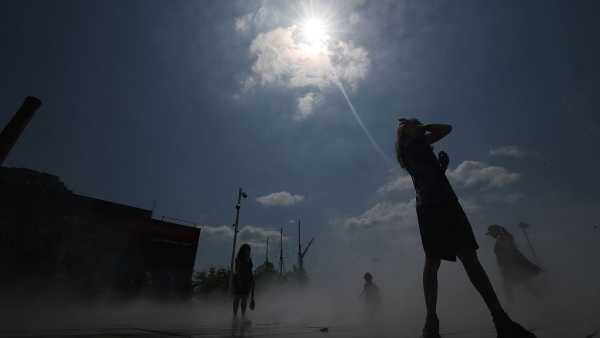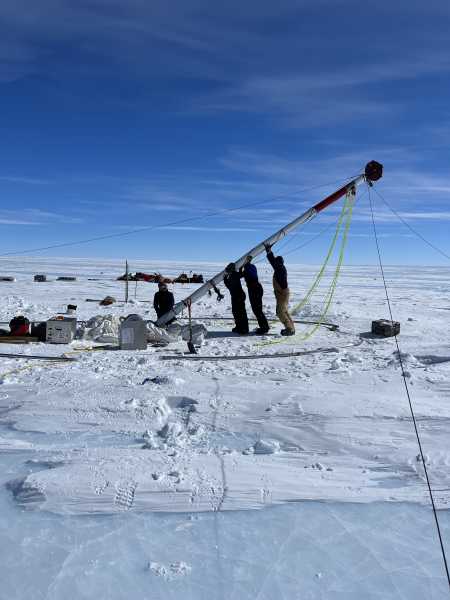
NASA's ER-2 aircraft spotted a vast melt pond forming on an unnamed glacier in Alaska. Its vibrant blue color is a result of how the underwater ice absorbs sunlight. (Image credit: NASA/MABEL/ER-2)
This 2014 aerial photo shows an unusually large and deep pool of bright blue meltwater sitting atop an unnamed Alaskan glacier. Melt ponds like these are becoming more common in the Arctic as a result of climate change, further accelerating the rate of ice loss in the region.
The amazing melt pool, strewn with numerous small icebergs, is approximately 2,300 feet (700 meters) wide at its widest point. The bright blue color of this pool gives the impression of great depth. However, this is likely just an optical illusion caused by the ice underneath. A 2022 study found that the average depth of Arctic marine melt pools is only about 9 inches (22 centimeters). However, it is unknown how deep this particular pool is.
Smaller versions of the photograph show that the melt pond was surrounded by nothing but snow for miles. Melt ponds typically cluster in close proximity to one another. The reasons why this pond grew so large on its own remain unclear.
The ice lagoon was discovered by the Multiple Altimeter Beam Experimental Lidar (MABEL) instrument aboard NASA's ER-2 aircraft, a specialized research aircraft capable of flying at more than twice the altitude of commercial airliners. The aircraft was surveying the area as part of a larger study of Arctic melt ponds and had taken hundreds of similar images. But this pond was one of the largest ever spotted, according to NASA Earth Observatory data.

Melt ponds tend to form in large groups on sea ice. Their dark color allows them to absorb additional sunlight, which exacerbates the effects of climate change.
Melt ponds form in late spring and early summer when the ice begins to melt under the influence of heat, and water collects in the ice depressions. These formations have always existed in the Arctic, but their number has increased significantly in recent years due to the impact of anthropogenic climate change.
The rise in melt ponds is worrying researchers because the deep blue puddles absorb significantly more sunlight than snow and ice. This causes the ponds to warm up and the ice around them to melt more, especially when they are located on fragile sea ice. This “positive feedback” could eventually lead to uncontrolled melting
Sourse: www.livescience.com





